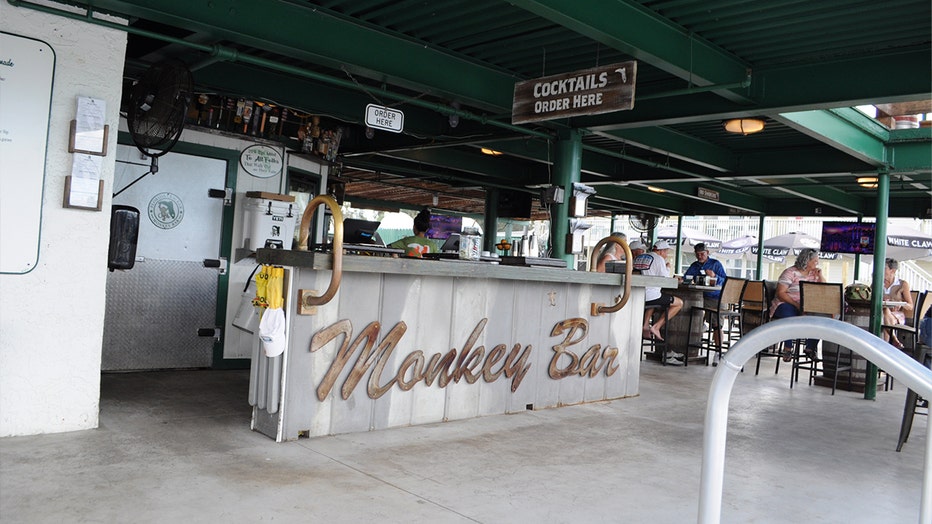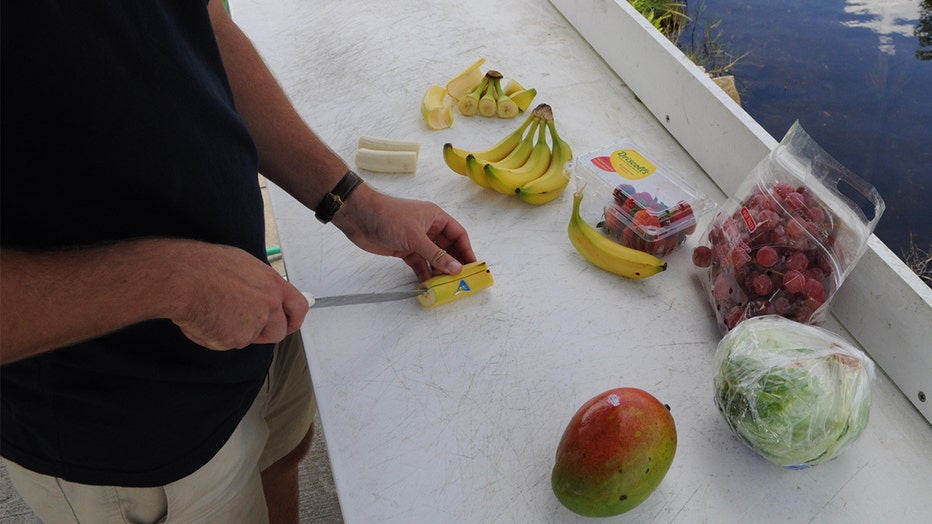Monkey Island of Homosassa, a Florida tale
Monkey Island: A unique, historical fixture of Homosassa
These monkeys have their own private island in the middle of the Homosassa River. Monkey Island has been around since the 1960s -- starting out as a pile of rocks. Today, it still stands. The monkey residents are cared for by nearby resort owners.
HOMOSASSA, Fla. - In the middle of the Homosassa River sits an island of monkeys.
Florida's own version of Alcatraz started out as a pile of submerged rocks in the 1960s and has transformed into a quirky historical fixture. It's an old tale – a story that is told numerous times by the locals and remains an attraction that both surprises and delights visitors far and wide.
The story of Monkey Island started when a well-known developer sought to fix two seemingly simple problems. Little did he know, he would create an iconic part of the Nature Coast's identity that will stick around decades later.
A lighthouse, wooden hut, swinging ropes, and palm trees sit on top of that pile of sand and rocks. Over the years, several monkeys have called it home.
The first problem
A Citrus County developer, G.A. Furgason – nicknamed "Furgy" – was involved in establishing the areas around Homosassa River back in the 1950s and 1960s, explained Marie Straight, secretary of the Historic Monkey Island board. He worked for 36 years until his retirement in 1983.
Furgy put together land deals and even created an animals and plants attraction, known today as the Ellie Schiller Homosassa Springs Wildlife Park. It's located about 2.5 miles – by road – from Monkey Island.

This photo shows what the area looked like before Monkey Island was created. Boaters drove into a pile of rocks near the resort. A drag line operator was directed to cover the rocks with dirt to make it more visible.
During the 60s, he also worked with Norris Cattle Company, which owned land in the area, Straight said. At one point, the company was about to send Furgy away for business.
"Before Furgy left," Straight explained, "he kept hearing of a pile of rocks in the middle of the river and it was causing trouble for the fisherman."
Those rocks were shallow enough for boats to run into, and deep enough where fisherman couldn't spot them with the naked eye. So, Furgy and Norris – the owner of the company he worked for – directed one of his dragline operators to pile some dirt around the rocks for boaters to spot them and avoid a collision.
"So, what happened then – how Monkey Island came to be – is these dragline operators got a little bit carried away," Straight explained, "and put a lot of dirt on these rocks. Thereby, they created the small island in the river which is just outside the Riverside resort today."
When Furgy returned, he noticed the "island" wasn't very attractive.
"It was just a bunch of dirt in the middle of the river so he enhanced it by building a lighthouse on the island," Straight said.
That lighthouse still stands on Monkey Island today.

The photo on the left shows Monkey Island before the monkeys arrived, on the right, you can see the original lighthouse is still there today.
The second problem
Meanwhile, the monkeys that would eventually call that manmade island their home were brought to America by a naturalist, John Hamlet.
Furgason ran into Hamlet in South Dakota and convinced him to come to Florida to work with him. The naturalist brought along monkeys too.

These photos show the current residents of Monkey Island: Ebony, Ralph and Emily. (Provided by Blake Lowman)
READ: Meet the primate residents of Florida's Monkey Island: Ralph, Emily, and Ebony
Straight said the monkeys' purpose was to perfect the polio vaccine back in the 1950s.
"The idea was that the monkeys would do like most Floridians – retire – after their purpose was satisfied with the polio vaccine and then they would be retired to the Homosassa State Wildlife Park," she explained.
A scenic tour of Monkey Island
Up in Homosassa and down by the river, you can find Florida’s own Alcatraz. Three spider monkeys -- Ralph, Ebony, and Emily -- call Monkey Island their home. The tiny, manmade island has been there since the 1960s. The best view is from the Florida Cracker Riverside Resort’s Monkey Bar, which owns the historic island.
But, like in the movies, the monkeys were quite mischievous, escaping their cages.
"They would get in [visitors'] cars. They would steal candy. They would even bite some of the tourists," Straight said. "So, now we have a problem. The way the legend goes, it says that he had often thought of sending them to Alcatraz."
But then Furgy realized, he had his own little Alcatraz right in Homosassa River. So, the primates – three spider monkeys and two squirrel monkeys – moved in and the Monkey Island we know today was established.

One of the three spider monkeys residing on Monkey Island seen eating at the top of a tree. (FOX 13 / File)
The permanent solution, decades later
Today, Monkey Island remains one of the most unique sites along Florida's Nature Coast. The original group of monkeys lasted for 12 years before they began dying. They were replaced with younger monkeys over the years.
MORE: Monkey Island in Homosassa is getting a major overhaul in 2022
Now, only a handful of spider monkeys remain.
Blake Lowman and his family took over the resort in late 2019 and, no, he never thought he would ever own an island of monkeys.
"We’re from the area. We’re from Hernando County," he explained. "We’re only 30 minutes away and my family is involved in multiple businesses and just saw an opportunity. It sounded like a pretty cool thing to try and get into so, yeah, we purchased it."

The Monkey Bar at Florida Cracker Riverside Resort
With that ownership, the Lowman family and community made big plans to maintain Monkey Island. He said he wants to make sure it can last another few decades for future generations of monkeys to live and for the community and visitors to enjoy.
Owning Monkey Island comes with guidelines in order to maintain an ownership license. Unlike decades ago, there are now regulations and rules to follow set by the United States Department of Agriculture and the Florida Fish and Wildlife Conservation Commission that the owners must follow.
To start: food. The monkeys are fed twice a day. Their diet includes fruit, vegetables, and a USDA-approved "monkey chow" with a blend of nutrients they are required to consume.

Blake Lowman chops up bananas for the spider monkeys to eat. (FOX 13/File)
But the fun part is how they are fed. The marina staff employees – who are cross-trained to feed the primate residents – pile into a boat and depart for Monkey Island.
While they are out there, employees circle the island, looking for any hazards or trash.
"Then we throw out the food to them. We try to scatter around so they kind of have to dig, and play, and search for their food," Lowman explained. "Usually, at least once a week we try to get on the island to do any repairs, try to clean up any trash or anything that might be hazardous to them. Basically, people kind of throw things on the island so we have to go clean that up. It’s just sad. Very sad."
Drone Zone: Monkey Island on the Homosassa River
Ralph, Emily and Ebony. They are the energetic primates living on Florida's own version of Alcatraz, Monkey Island. They love to swing by their tails, enjoy the scenic views of Homosassa River and eat. Their favorite meal? Sweet potato.
He said every day is different. His family meets people from every state, every country – all walks of life.
"They’re pretty shocked if they’ve never been here before and they see an island right off of our property with monkeys on it," Lowman said. "You always explain the story of how they got there and the history behind it."
He said the best way to see Monkey Island is from the Florida Cracker Monkey Bar on the resort property, which is about 30 to 40 yards away.
To learn more about conserving Monkey Island, head over to the Historic Monkey Island website or the Florida Cracker Riverside Resort website.

